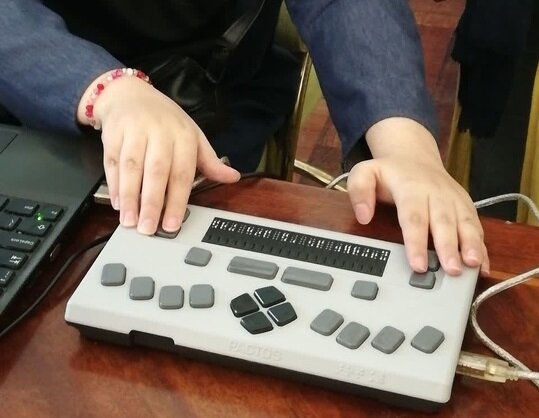Visitor system dedicated to the unsighted launched in Niavaran Complex

TEHRAN – A visitor system for the visually impaired is now operational at the Niavaran Cultural and Historical Complex in northern Tehran.
This innovative system, initially installed last October to coincide with White Cane Safety Day, aims to enhance the museum experience for the visually impaired by providing them with comprehensive access to the site's cultural and historical treasures.
On Monday, the system was officially introduced to a group of visually impaired visitors who were trained on how to use the new system to navigate the museums effectively.
On the same day, the group had the opportunity to tour the complex's palace and museums, experiencing firsthand the new system's capabilities.
According to museum curators, the system requires relevant museum information to be accessible so that unlighted visitors can obtain information about the museums in audio and Braille formats using the tactile display device. “This device presents information and images in a raised format, allowing visually impaired visitors to gather details by touch.”
To access detailed information about these raised images, visually impaired users can tap on them to receive auditory information, enhancing their understanding and engagement with the exhibits.
Moreover, the launch of this system has been met with enthusiastic support from its intended audience as it allows visually impaired individuals to explore and appreciate the rich heritage housed within the Niavaran Complex.
Covering an area of about eleven hectares, the Niavaran Cultural-Historical Complex is composed of several landmark buildings, museums, and monuments constructed in the 19th and 20th centuries during the Pahlavi and late Qajar eras.
The history of the palace complex stretches back to about 280 years ago when Fath-Ali Shah of the Qajar Dynasty ordered a summer residence to be built in the then countryside area of the capital. The two-story Ahmad-Shahi pavilion is one of the highlights of the complex.
With an area of 9,000 square meters, the palace is entirely adorned with magnificent plasterwork, mirrorwork, and tilework. Its architecture boasts a blend of pre- and post-Islamic arts. Its beautifully decorated and fully furnished interior features loads of artwork, such as precious paintings and sculptures by Iranian and foreign artists.
The main palace of the complex was originally erected for royal ceremonies and gatherings. However, it later turned into a dwelling for Mohammad Reza Shah and his family.
AM
Leave a Comment